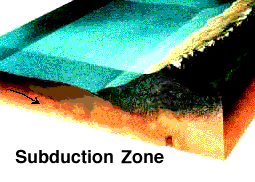This is a drawing of a portion of the Earth's crust undergoing subduction.
Click on image for full size
Image copyright 1997 by the American Geophysical Union. Further electronic distribution is not allowed.
Subduction
When two sections of the Earth's crust collide, one slab of lithosphere can be forced back down into the deeper regions of the Earth, as shown in this picture. The slab that is forced back into the Earth usually becomes melted when the edges reach a depth which is hot enough. This process is called "subduction".
Melted crust rises back towards the surface where it helps make volcanoes and islands.
The melted crust also releases gases of the atmosphere which had become trapped in the ground. Thus subduction of the crust helps to recycle the atmosphere!
You might also be interested in:

Plates at our planet’s surface move because heat in the Earth’s core causes molten rock in the mantle layer to flow. We used to think the Earth’s plates just surfed on top of the moving mantle, but now
...more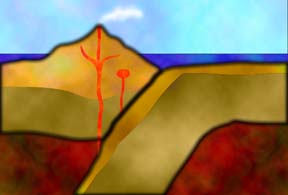
Many kinds of surface features are clues to a sliding lithosphere. Two types of features can form when plates move apart. At ocean ridges, the crust splits apart to make room for molten mantle rock. Continental
...more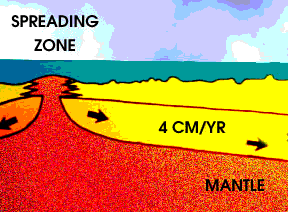
As the Earth cools, hot material from the deep interior rises to the surface. Hot material is red in this drawing, under an ocean shown in blue green. The hotter material raises the nearby layers, and
...more
Mountains are built through a general process called "deformation" of the crust of the Earth. Deformation is a fancy word which could also mean "folding". An example of this kind of folding comes from
...more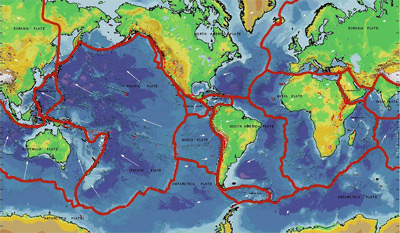
Many forces change the surface of the Earth over time. The largest force that changes our planet's surface is movement of Earth's outer layer in a process called plate tectonics. As shown in this picture,
...more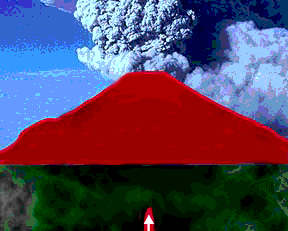
Volcanoes form when hot material from below risesand leaks into the crust. The hot material, called magma, rising from lower ground, gathers in a reservoir called the magma chamber. Eventually, but not
...more
Scientists have learned that Mount Hood, Oregon's tallest mountain, has erupted in the past due to the mixing of two different types of magma. Adam Kent, a geologist at Oregon State University, says this
...more


